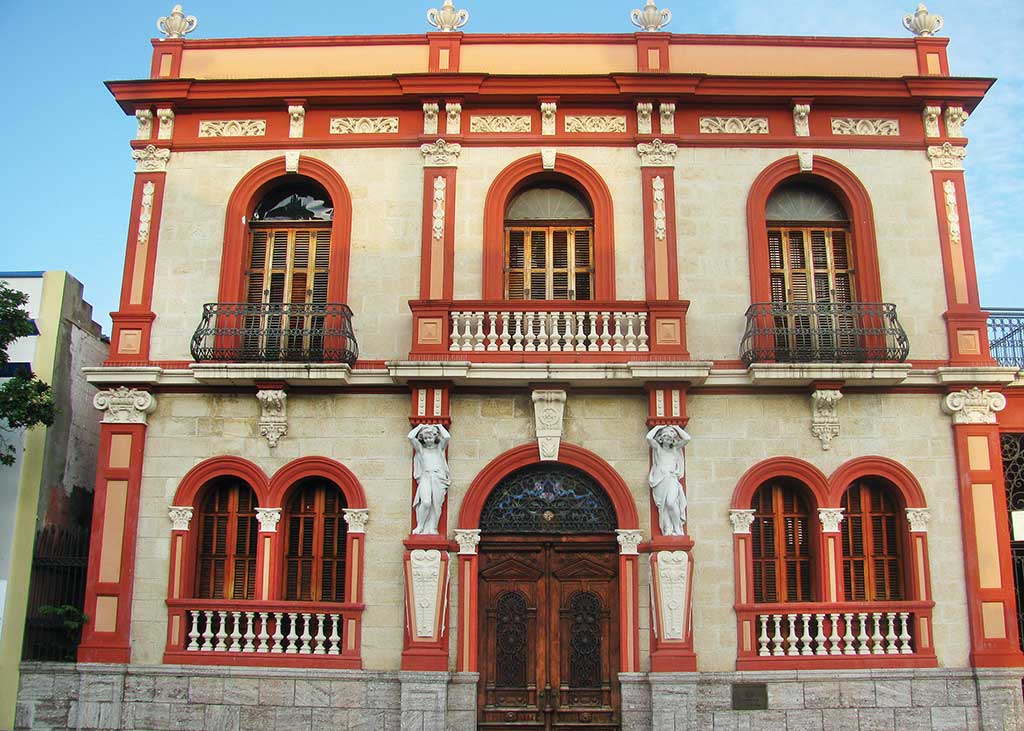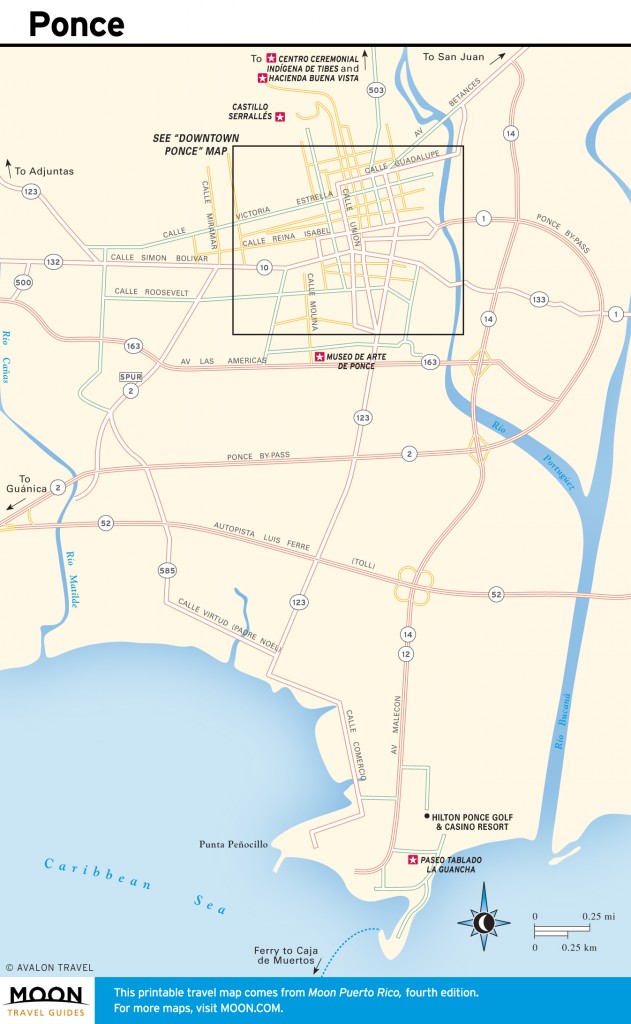Ponce’s rich cultural life gave birth in the mid-1800s to a unique form of romantic classical music called danza. A melding of Caribbean and European styles, the formally structured musical style is often described as an Afro-Caribbean waltz and was typically performed on piano and bombardino (similar to a trombone) to accompany the dance. As with early rock and roll, conservatives disapproved of the new style because it encouraged couples to dance too closely. But it was eventually embraced by the whole island. In fact, Puerto Rico’s national anthem, “La Borinqueña,” was originally written as a danza. The form is still celebrated today with Ponce’s annual Semana de la Danza festival.
When the United States took control of the island in 1898, new trade restrictions choked the city’s shipping industry.The good times continued to roll for a while in Ponce. In 1882 the much ballyhooed Exposition-Fair was held in Plaza de las Delicias to celebrate and cultivate the city’s standing as a cultural and agricultural center. Several pavilions were built, including a Moroccan-style structure, no longer standing, that contained a bazaar and hosted children’s dances. Another structure built for the fair was the startling black-and-red-striped structure known today as the Parque de Bombas, which later became the city’s fire station and now houses the local tourism office. Many more tents and stalls filled the plaza displaying local produce, flora, and fauna. Horse races were held in the streets, and concerts, plays, and literary readings were held at Teatro La Perla.
The historic Casa Armstrong Poventud was built in Ponce in 1899. Photo © Suzanne Van Atten.
By the turn of the 20th century, the tides began to turn for Ponce. When the United States took control of the island in 1898, new trade restrictions choked the city’s shipping industry. Sugar prices fell, sending that industry into decline, and hurricanes destroyed the coffee plantations. By the time the Depression rolled around, Ponce began to spiral into a severe economic decline.
Further demoralizing the social fabric of the city was an event in 1937 referred to as the Ponce Massacre, in which 19 people were gunned down during a demonstration by members of the island’s Nationalist Party seeking independence from the United States. Two hundred people were injured in the melee, including many women and children. To learn more, visit the Museo de la Historia de Ponce.
Today Ponce is still struggling to find its economic foothold. In the early 1990s, millions of dollars were earmarked to revitalize the city, and much of the area around Plaza de las Delicias has been restored. The plaza is lined with many thriving businesses, including banks, hotels, bars, tourist shops, cafés, and fast-food restaurants. During the day, sidewalks are filled with shoppers, tourists, and street vendors selling everything from fresh flowers to hot dogs. At night there are often live concerts and lots of teenagers and lovers sitting on park benches, eating ice cream, and parading along the sidewalks. In addition, a recreational facility called La Guancha, featuring restaurants, bars, and a playground, was built near the harbor, and it has infused the tourist industry with some much-needed enthusiasm. And in 2005, JetBlue began flying direct from New York City’s JFK airport into Ponce’s Mercedita International Airport.

Travel map of Ponce
Ponce has a petty street crime problem, so stick close to Plaza de las Delicias at night, or take taxis to area restaurants and casinos. And if you’re traveling by car, beware of Ponce drivers. They’re arguably the worst on the island. Nevertheless, Ponce is full of many charms that are well worth taking a few extra precautions to enjoy.
Excerpted from the Fourth Edition of Moon Puerto Rico.